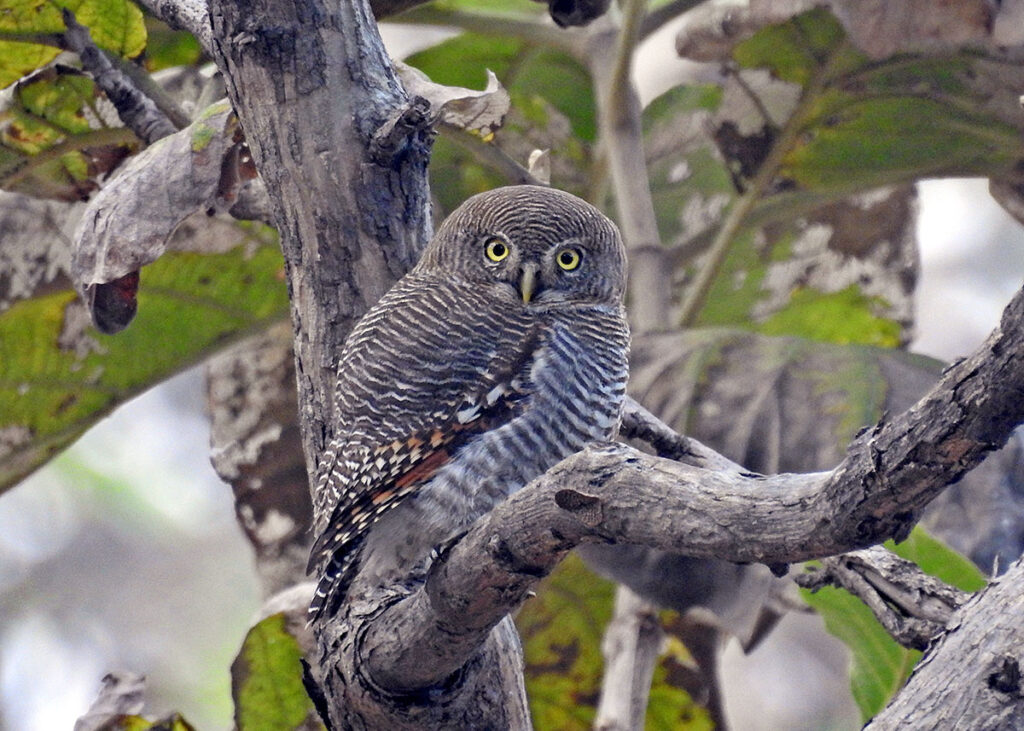Imagine discovering an Owl so small that it was called an Owlet which later became extinct for over a century! That’s precisely what happened with the Forest Owlet, a small owl species found in Central India. In 1872, a specimen was collected by F. R. Blewitt and subsequently described by Hume in 1873. However, the Forest Owlet remained elusive for over a hundred years, and no one could find it. It was not until 1997 that this enigmatic bird was rediscovered in the Toranmal Reserve Forest of Central India. Since then, additional sightings have been recorded, but the factors governing its distribution still remain uncertain.
To shed light on this, our team set out to study the three species across an extensive part of the predicted range of the Forest Owlet. From the surveys, we found that the Jungle Owlet occupancy was the highest, followed by the Forest Owlet and then the Spotted Owlet. Although, the detectability of Forest Owlet was the highest followed by Jungle and Spotted Owlet.
The Forest Owlet is considered an endangered species and is endemic to Central India. This region is also home to two other owl species similar in size to the Forest Owlet – the Jungle Owlet and the Spotted Owlet. The Jungle Owlet prefers to reside in dense forests while the Spotted Owlet is found in human-modified landscapes. These two species have a much wider distribution than the Forest Owlet, but they co-occur with the Forest Owlet in parts of Central India. Understanding how these three species use their habitat is crucial to prioritizing conservation action.
The findings highlight the importance of studying multiple species in the same ecosystem to understand the interactions between them and their habitat requirements. The results also suggest that the Forest Owlet may have more specific habitat requirements than the other two species. It prefers a mix of large trees and open cultivated lands for nesting and foraging efficiency. Surprisingly, it avoids dense forests and instead, occurs in areas with lower canopy cover and tree density. The Forest Owlet also shares foraging sites with the Spotted Owlet but exhibits habitat partitioning with the Jungle Owlet. The study highlighted differences in occupancy rates in different forest areas, emphasizing the impact of habitat quality and degradation on the occurrence of the Owlet species. This information can help guide conservation efforts, such as identifying key habitats for the Forest Owlet and ensuring that they are protected.
Despite the rediscovery of the Forest Owlet, the species remains endangered. Our study provides valuable information for conservationists and policymakers to protect the Forest Owlet and its habitat. With continued conservation efforts and research, there is hope that this small and elusive owl species will continue to thrive in the forests of Central India.
Zainab Z. Khan
Project Associate
Landscape Level Planning and Management
Wildlife Institute of India,
Dehradun – 248001
The results of this study were recently published in the Journal of Field Ornithology:
Khan, Zainab Z., H. S. Sushma, B. Paul Antony, Kaushik M. Koli, Aditi Neema, M. R. Meera, M. Arasumani, V. V. Robin, R. Jayapal, and S. Mukherjee. 2023. Habitat determinants of species occupancy and niche partitioning among sympatric owlets: the paradoxical role of agricultural lands for the endangered Forest Owlet, Athene blewitti. Journal of Field Ornithology 94(2):1. https://doi.org/10.5751/JFO-00244-940201.
Header photo: Spotted Owlet (Athene brama) by Zainab Khan.


